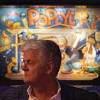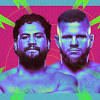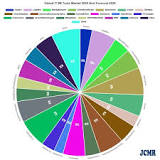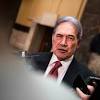When did the Cold War end? Start and end dates of US and Soviet Union rivalry after WW2 - outcomes explained

Here’s everything you need to know about The Cold War and how it impacted Europe



25th October 1962: American tanks on alert in the Berlin Grunewald, West Germany, as the crisis over the Cuban blockade looms during the Cuban missile crisis. (Photo by Keystone/Getty Images)
Images of Russian troops invading Ukraine has been a dark day for Europe.
With images of missile strikes and tanks rolling in, many have been reminded of major conflicts, including The Cold War.
But what where the key dates of the conflict and what was the outcome?
Here’s everything you need to know about The Cold War.
The Cold War was a period of geopolitical tension which saw the United States and the Soviet Union face off.
The allies of the United States (the Western Bloc) and allies of the Soviet Union (the Eastern Bloc) also faced off during this time.
It is named the ‘Cold War’ because the US and Soviet Union never officially declared war on each other during the period of conflict.
The beginning and starting points are often debated by historians, due to the fact that war was never officially declared and there was no direct fighting between the two countries.
However, it is generally recognised that the Cold War began in the aftermath of World War Two on 12 March 1947.
This date was when the Truman Doctrine was invoked, a piece of US foreign policy which sought to contain the geopolitical power of the Soviet Union.
Although a date is not believed to be concrete, the most widely-agreed finishing point is 26 December 1991.
It was on this date that the Soviet union was dissolved.
For a period of tension which lasted more than 40 years, there were many flashpoints.
While there were strategic back and forths between the West and the communist Eastern Bloc, there were power struggles also.
This includes Soviet Union invading more land, such as Hungary in 1956.
Both the US and the Soviet Union faced off in a space race from 1955 until 1972 in a show of power for both sides.
However, eventually the USSR regime was toppled, with a major point coming in the fall of the Berlin War in 1989.
West Germany lived under a capitalist society, while East Germany lived under a communist society, with former US President Ronald Reagan famously saying “ Mr Gorbachev, tear down this wall.”
The fall of the wall brought together West and East Germany - which was separated by a concrete wall through its capital city - for the first time since since 1961.
Eventually, the Soviet Union was dissolved in 1991.
Upon the dissolution of the Soviet Union, new states emerged and re-emerged in eastern Europe.
Alongside the Russian Federation, 14 countries were created in total, including:
- Armenia
- Azerbaijan
- Belarus
- Estonia
- Georgia
- Kazakhstan
- Kyrgyzstan
- Latvia
- Lithuania
- Moldova
- Tajikistan
- Turkmenistan
- Ukraine
- Uzbekistan
Despite the union being broken up, it has continued to influence Russian politics and the politics of the countries involved.
Russian President Vladimir Putin has often referred to the countries which were once part of the Soviet Union as being in Russia’s “sphere of influence”.
Prior to the invasion of Ukraine on 24 february 2022, Putin also spoke publicly about how modern Ukraine was built on “ancient Russia land”.
A message from the editor:
Thank you for reading. NationalWorld is a new national news brand, produced by a team of journalists, editors, video producers and designers who live and work across the UK. Find out more about who’s who in the team, and our editorial values. We want to start a community among our readers, so please follow us on Facebook, Twitter and Instagram, and keep the conversation going. You can also sign up to our email newsletters and get a curated selection of our best reads to your inbox every day.


 New Zealand
New Zealand Argentina
Argentina  Australia
Australia  Austria
Austria  Brazil
Brazil  Canada
Canada  Germany
Germany  Ireland
Ireland  Italy
Italy  Malaysia
Malaysia  Mexico
Mexico  Poland
Poland  South Africa
South Africa  United Kingdom
United Kingdom  United States
United States 








